(Graphic yet extremely rad wordage imminent. Viewer discretion advised…)
Tough as nails, unforgivingly punk, you ugly cry every time you watch Rutger Hauer’s “tears in rain” monologue at the end of Blade Runner — if this describes you, you’re probably fierce enough to make it through the blistering 18-minute climb that’s Black Future ‘88: a from-the-bottom-to-the-top roguelike that will rock your cyberpunk socks off. I caught up with the game’s creator, Don Bellenger (aka Super Scary Snakes), before the end of the world as we know it, and here’s what he had to say about his headlong plunge into the indie scene.

Me: If you had to describe Black Future ’88 in just a few sentences, what would you say?
Don: Hi! Welcome to the Black Future ’88 booth! Black Future ’88 is a synthpunk fever-dream drug-fueled suicide mission where players only have 18 minutes to climb and murder the living tower known as SKYMELT.
What are some of your favorite cyberpunk books, movies, tracks, games, etc?
Ooh! That’s a good one! Personally, I really tend to avoid certain highly used cyberpunk tropes and focus more on the sci-fi aspects that have something to say about human nature. Lately, a lot of them have been outside of what’s strictly considered cyberpunk, and I’ve been really into transhumanism in books. I just read The Murderbot Diaries on vacation, and I thought that was a highly scary but plausible look at an extreme future. I think the Broken Earth series by N.K. Jemisin has more interesting things to say about human exploitation and technology than something “very cyberpunk” like Altered Carbon or that Mute movie. Oh my god, Mute. Yikes.
I think my first foray into cyberpunk actually came secondhand when I was a teenager and canonical cyberpunk was flying way over my head, but I was able to really enjoy this Swedish band called Covenant who were making this proto-industrial music based on Blade Runner and Robocop. I still listen to those early albums sometimes, and I think it’s amazing how far ahead of their time they were, and how they perfectly captured the spirit of a dystopian, murderous future using only synthesizers. At the time, I caught them on a fuzzy college radio station, and it was mind-blowing. I’d never heard something so fucking honest and mean before.
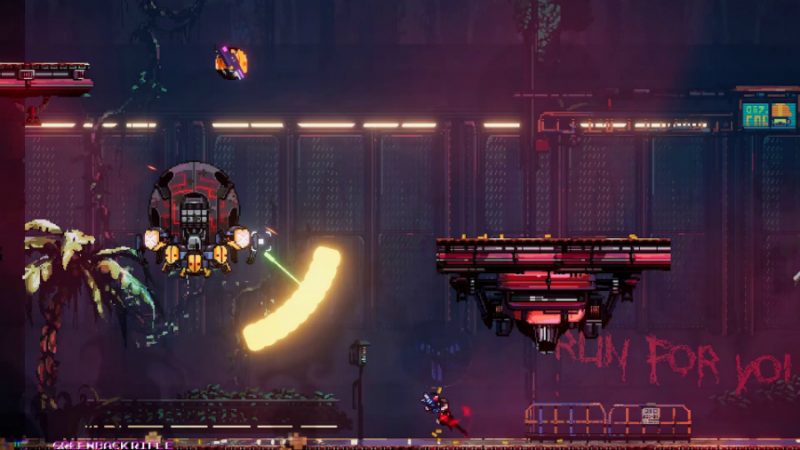
How much did titles like those influence Black Future ’88’s creation?
I think it’s really easy to point at certain aesthetic choices of BF’88 and trace them back to films, but honestly, a lot of them are more aligned with Cure concerts and the fog machines of my youth than certain films. I used to spend a lot of time obsessing about lighting for bands. First my own band, and then later I got involved helping other bands really amp up their live stage show. I’m a big fan of tightly sequenced lighting as it relates to music. There’s something just really synesthetic about it, and the stuff I did as a musician is directly related to the game. At one point, my band got paid a bunch of money for a show, so we spent it on this insanely high powered laser that I had to actually get a license to use. Did you know that the FDA is the government bureau in charge of regulating high powered lasers in the USA? Ka-Razy!
Can you talk about how you came up with the game’s overall cyberpunk aesthetic?
The game came together really organically, and honestly, this is probably going to kill a lot of people out there trying really hard to make it in games, but I really just kind of lucked into this because I was only trying to make a cool game that I would’ve liked to play and then all of a sudden it had some really good organic press, and I got a publisher. The whole thing started as a prototype that I thought I could finish in a year while my wife was in grad school. The good news was that because it was super organic, I was able to just start at the roots of the experience.
“What should the world feel like?” “It should feel violent. Everything should feel dangerous. Every weapon should feel like a gun that some sketchy dude made out of scrap metal and then taped a knife and brass knuckles to it.” Having that as a guiding light has been great, and naturally led into a brutal post-apocalyptic/cyberpunk world. My core philosophy in the game has always been “design for Holy Shit,” which means, as much as possible, try to create these tight, little mini-experiences where a player just mutters to themselves about how rad that was. It’s pretty liberating to have that as an aesthetic and gameplay philosophy because that means that everything is on the table.
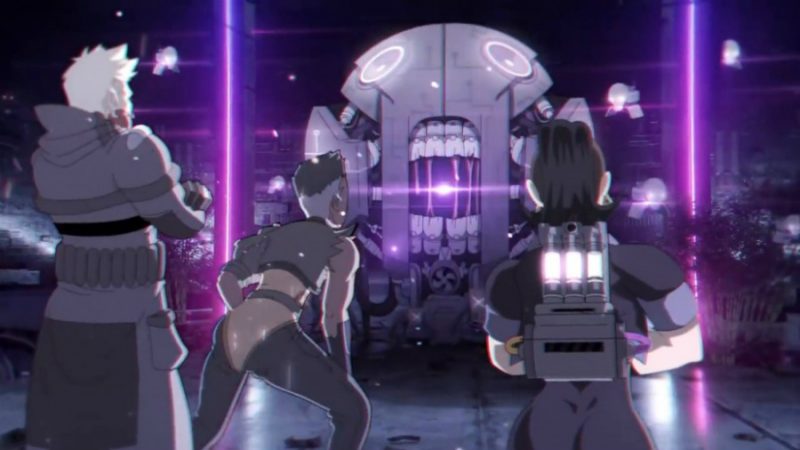
Why did you decide to make it a platformer with a highly pixelated art style?
Honestly, because I’m a dad and only have time for short-session roguelikes, and at the time I started, there were lots of top-down ones. I thought a platformer would be different and cool. That’s it. It’s really that dumb. I’ve never made a platformer, and generally, I’ve been figuring stuff out as I go. I think that outsider perspective is also what gives Black Future ’88 a really unique feel. I think adding gravity to a roguelike is also really interesting, and makes for a really awesome design space.
A lot of roguelikes that DO have gravity tend to underuse it, and the only good example as far as I can tell is still Spelunky. I think when people first run into SKYMELT, they’ll probably say “oh cool, it’s just pretty contra,” but after several hours I think they’ll see the depth of the combat system and that the game is offering a really unique take on 2D combat, and that it’s worth mastering.
As for the art style itself, I was lucky early on to meet really talented pixel artists, but after a while, I saw that the game needed to stand out visually and that I wasn’t going to be able to afford to sprite out every individual effect, so I started learning more about graphics programming and ways that I could get maximum screen impact with the skills I already had. Nailed it.
I think that as a musician who’s trying to do something different, that’s really bled into how I feel about making games. A lot of people get really hung up on
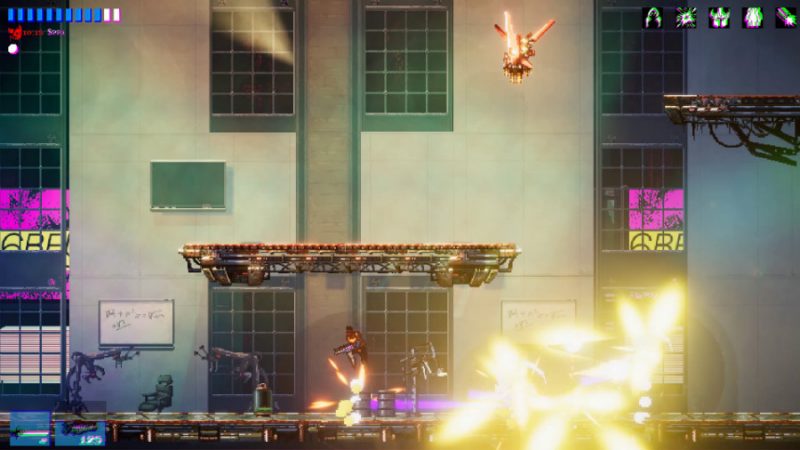
Does Black Future ’88, like many other examples of cyberpunk narratives, have a political subtext?
Hard yes, but I’d like to leave it open to interpretation. Black Future ’88 has a lot going on in it, but I think there’s an understated political opinion in there, as well as several subtle points about humanism. I think the game has enough secrets and general story mysteries that I don’t want to spoil. I think the biggest question in the game is “what is SKYMELT?” It’s so important I made it into a loading screen tooltip to prompt the discussion inside the player’s head. If anybody can tell me what SKYMELT really is using the clues that I’ve left, they’re going to get a very special prize.
Why are you drawn to cyberpunk in general?
I think speculative science fiction is just really interesting, and the best versions of it have tangible threads back to our current cyberpunk hellscape that we live in. The more I think about the way Facebook and Amazon have become objectively awful companies but also have indispensable positions in people’s lives is just a very scary thought. If you look at the way Facebook operates, at this point they’ve been used in an actual fucking genocide, been used to signal boost every hateful and outdated ideology, and they also played a pivotal role in overthrowing the most important democracy in the world, and yet thousands of well-meaning so-called-humanists go to their job in Menlo Park every day to add shareholder value to that horrid company, and millions more follow made-up celebrities and Instagram their food. I’m not sure it gets more depressingly cyberpunk than 2019. I think I’m drawn to the human aspects of cyberpunk because I sincerely worry for people.
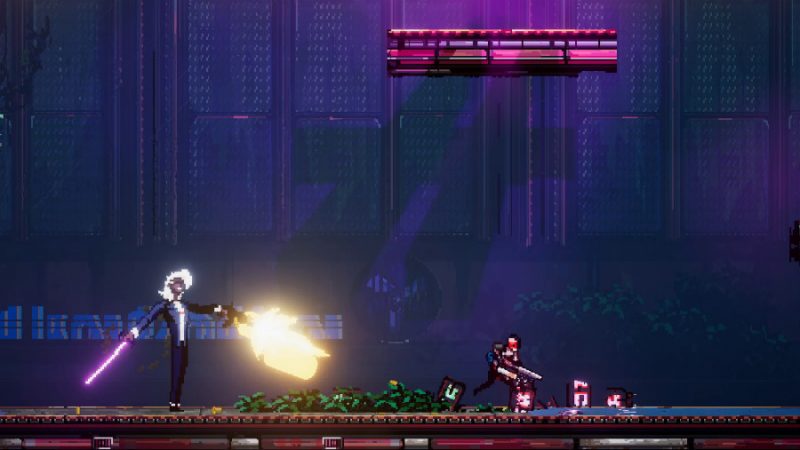
How do you think being a musician impacted the creative process behind the game?
I’ve been thinking about this a lot. I think the ultimate answer is that the music uses the game more than the game uses the music, and that to me makes it really interesting. It’s a really cool inversion, because the music is really more like this interactive concept album about pain and loss. The music itself is meant to be the voice of SKYMELT, so it’s alternately rapturous and pissed-off and also sometimes just extremely fucking sexy. At the same time when I was writing the bulk of the music, the Ghost Ship fire in Oakland happened, and I lost five of my friends in it.
I started to have a lot of mixed feelings about band life and playing in shitty venues, and it was a really shitty year of hardcore depression, drinking too much, and not really coming to terms with stuff. I think being able to pour myself into the music and the game has been a mixed blessing, but I want it to really be something for my friends who died in the fire.
It really led me to double down on the idea of the game as this interactive concept album, so unlike other games with regular “soundtracks,” this game doesn’t have “tracks” or “pieces” so much as it has “songs.”
Every piece in the game has a monster chorus tucked away somewhere within it, and I think the way that the game is extremely music-forward might turn people off looking for a more traditional roguelike experience, but I think it’s also punk as fuck. I keep a lot of mistakes in the music, and I mix it to sound best played loud on speakers, because that, too, is punk as fuck.
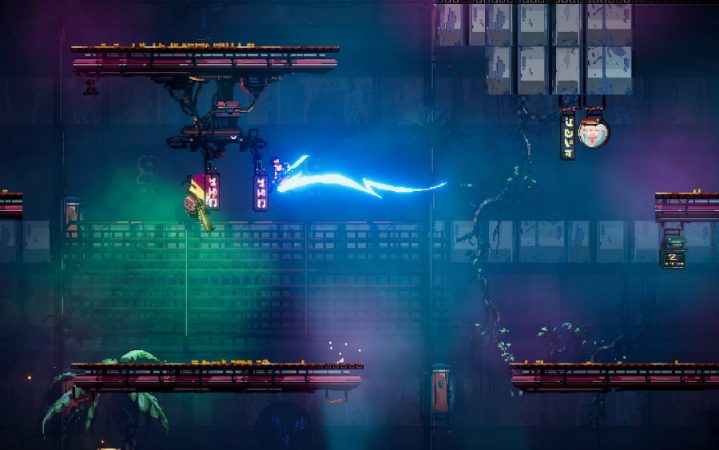
Anything else you’d like to relate to our readers about Black Future ’88?
Everything matters. Delete Facebook.
Do you have anything planned for after Black Future ’88, and if so, any concepts and types of games you’d like to explore next?
I do! Currently, I’ve been playing a ton of Slime Rancher and Stardew Valley with my five-year-old, and I think it would be cool to mix up roguelike ideas of permadeath and punishment with a constantly overwhelming life simulator. Imagine a game where the only permadeath was for the NPCs that you loved the most. I think the design space of a game like that would be incredible to play around in.
— FIN
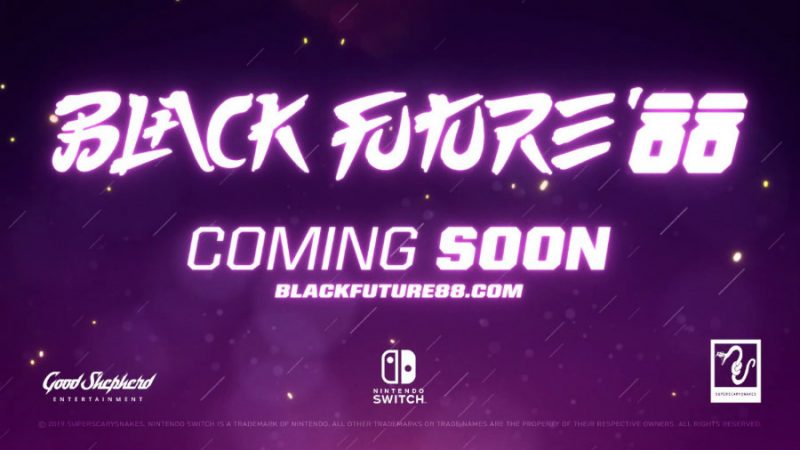
Make sure to keep a wide eye on the apocalyptic horizon for Black Future ‘88, which comes to our technocratic dystopia this year! Also, our review of the game is on its way soon. Check out the game’s official trailer below. We can’t wait to see what Super Scary Snakes makes next, even though it will probably be pretty heartrending to see all those beloved little NPCs die.


